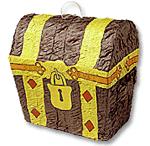Hello friends!
Recent joiner to the forum.
Here’s my story:
A year ago we bought a 120 year old heritage-listed (Australian term for ‘can’t be renovated’!…more or less) house in Northern NSW, Australia.
Now, 120 years ago, the primary commercial wealth drivers in Northern NSW, Australia, were timber and dairy production.
The fellow who built the house we bought owned the local timber mill 120 years ago, was mayor of Byron Shire Council 3 times (for those of you who are non-Aussies, Byron Shire is home to Byron Bay, one of Australia’s now top international tourist destinations, and the home of the one-and-only Chris Hemsworth aka Thor), and by all accounts and rumours, even ~70 years later after his death, was quite wealthy.
But here’s the thing. Apparently, no-one ever saw his cash (back then in Australia, cash was predominantly gold, silver and coins, with bank notes not really coming into circulation until 1910), and when he died, some of the older locals in town who still remain tell stories of people coming up to the empty house to try and find his money.
The house is built out of 150+ year old hardwood - the floors, the walls, the roof. The walls have subsequently been covered over with gyprock, whilst the floors and ceiling remain unemcumbered.
The house is a typical Australian ‘Queenslander’ , which means it sits on wooden pylons 3-4 feet off the ground, and so under-house access is pretty good.
My question is, to search the wall cavities, and where the walls meet the floors, what is the ideal detecting equipment for this, factoring that we would be detecting through very old hardwood, and gyprock?
Ideally I would like to get equipment that I can then also use under the house, to deep scan through the dirt.
If you’ve read this far, thank you and well done! Hopefully it’s been and interesting read, and any suggestions you can offer to help are much appreciated.
Recent joiner to the forum.
Here’s my story:
A year ago we bought a 120 year old heritage-listed (Australian term for ‘can’t be renovated’!…more or less) house in Northern NSW, Australia.
Now, 120 years ago, the primary commercial wealth drivers in Northern NSW, Australia, were timber and dairy production.
The fellow who built the house we bought owned the local timber mill 120 years ago, was mayor of Byron Shire Council 3 times (for those of you who are non-Aussies, Byron Shire is home to Byron Bay, one of Australia’s now top international tourist destinations, and the home of the one-and-only Chris Hemsworth aka Thor), and by all accounts and rumours, even ~70 years later after his death, was quite wealthy.
But here’s the thing. Apparently, no-one ever saw his cash (back then in Australia, cash was predominantly gold, silver and coins, with bank notes not really coming into circulation until 1910), and when he died, some of the older locals in town who still remain tell stories of people coming up to the empty house to try and find his money.
The house is built out of 150+ year old hardwood - the floors, the walls, the roof. The walls have subsequently been covered over with gyprock, whilst the floors and ceiling remain unemcumbered.
The house is a typical Australian ‘Queenslander’ , which means it sits on wooden pylons 3-4 feet off the ground, and so under-house access is pretty good.
My question is, to search the wall cavities, and where the walls meet the floors, what is the ideal detecting equipment for this, factoring that we would be detecting through very old hardwood, and gyprock?
Ideally I would like to get equipment that I can then also use under the house, to deep scan through the dirt.
If you’ve read this far, thank you and well done! Hopefully it’s been and interesting read, and any suggestions you can offer to help are much appreciated.








